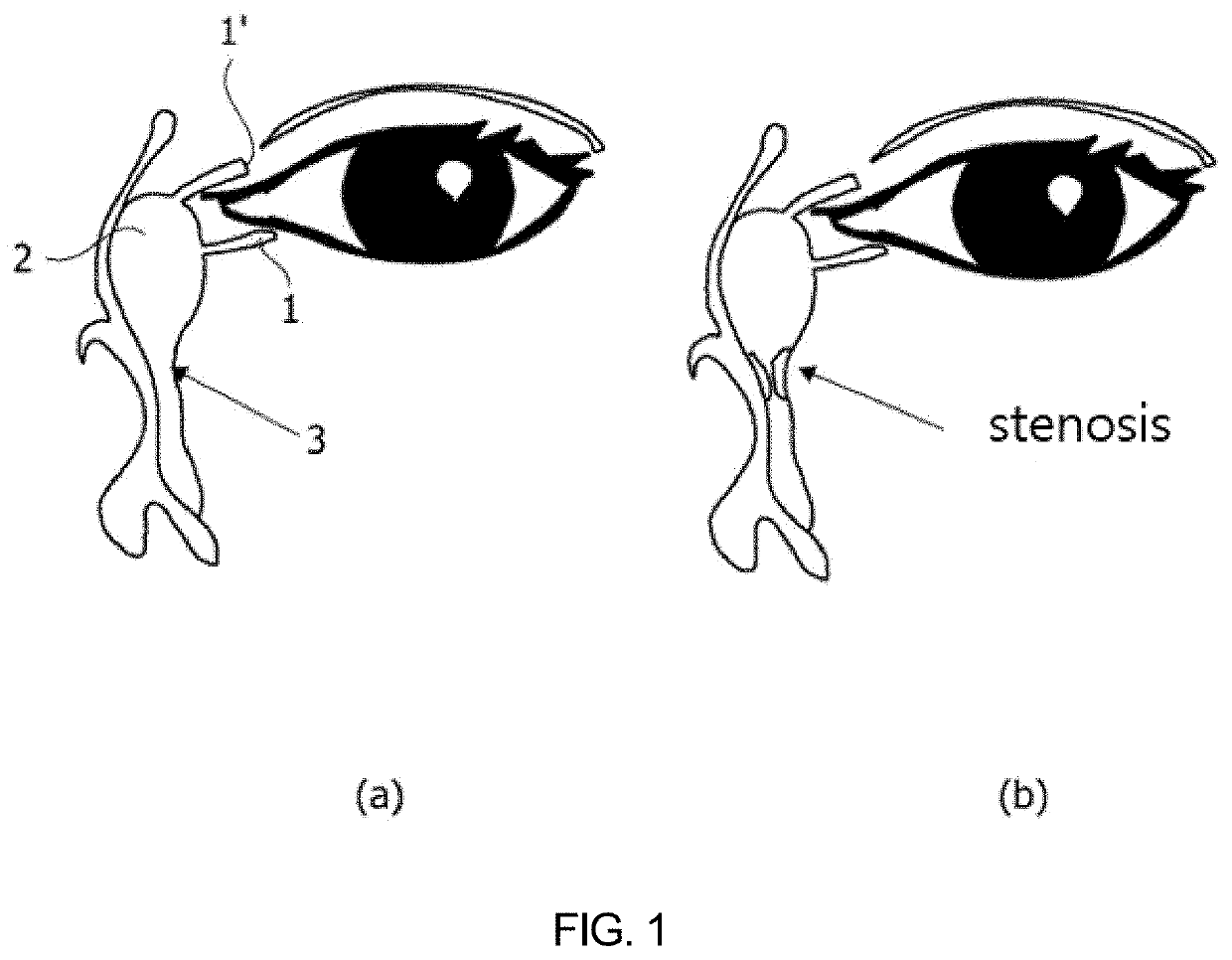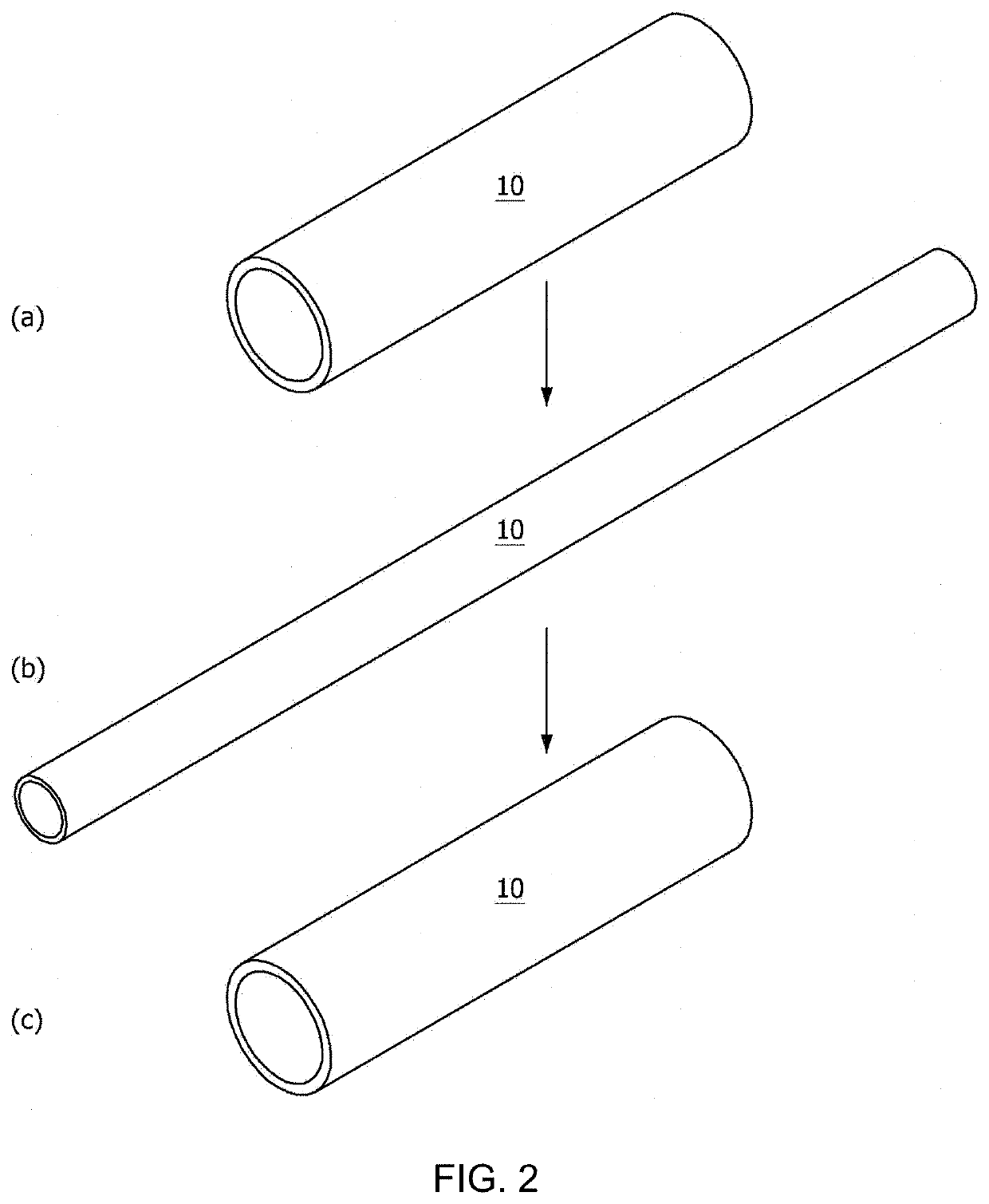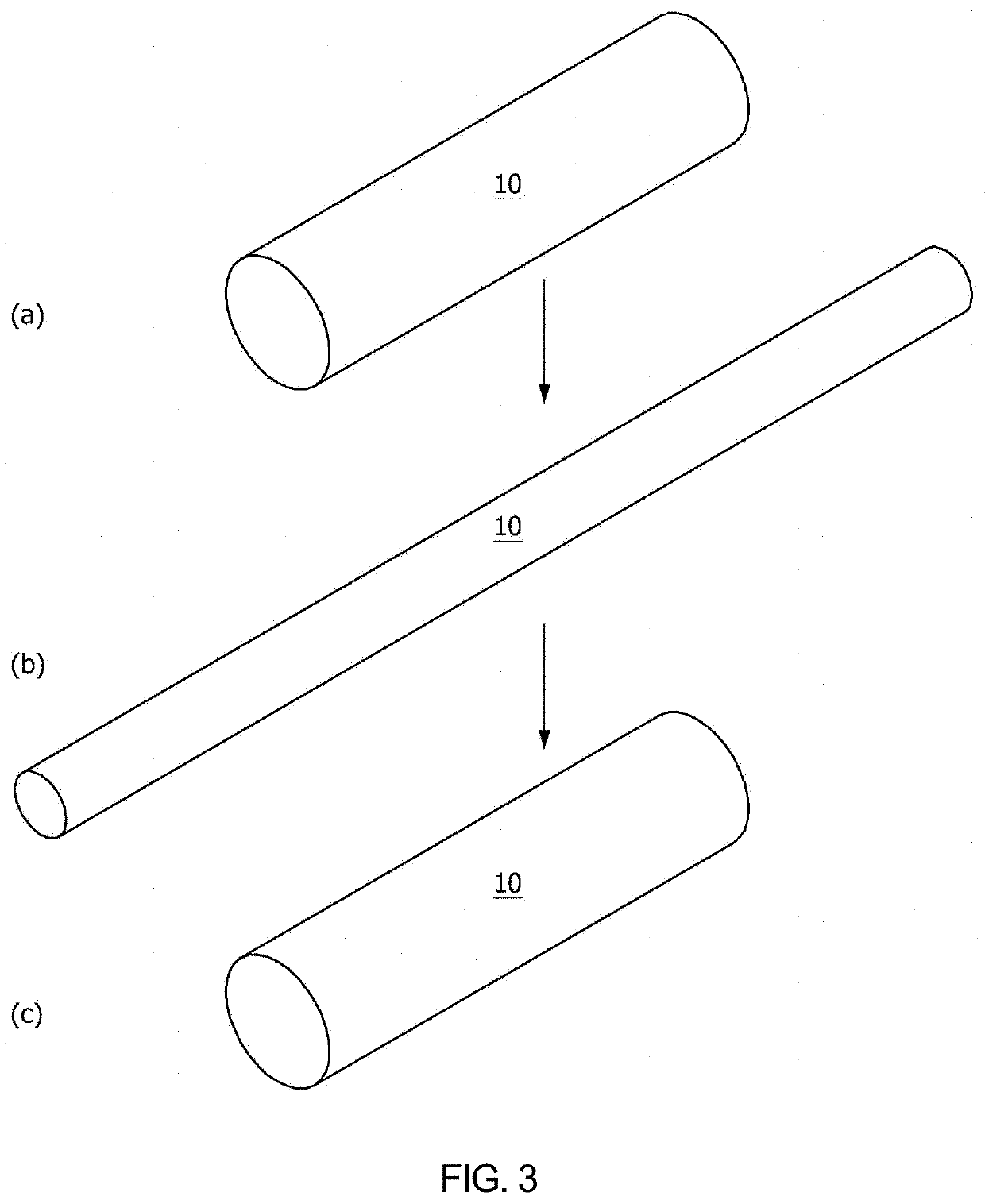Nasolacrimal duct insertion member comprising shape memory polymer
a technology of shape memory polymer and duct insertion member, which is applied in the direction of prosthesis, catheter, wound drain, etc., can solve the problems of epiphora, excessive overflow of tears, watery eyes, etc., and achieve the effect of convenient insertion and smooth discharge of tears
- Summary
- Abstract
- Description
- Claims
- Application Information
AI Technical Summary
Benefits of technology
Problems solved by technology
Method used
Image
Examples
example 1
of PCL-Co-PGMA Shape Memory Polymer
[0156]1-1. Synthesis of 94% PCL-Co-6% PGMA
[0157]1-1-1. Synthesis of 94% PCL-Co-6% PGMA
[0158]At the reactant input ratio of [CL]0 / [GMA]0 / [HD]0 / [TBD]0 / [HQ]0=90 / 10 / 1 / 1 / 0.5, 94% PCL-co-6% PGMA was synthesized as follows (see Table 1).
TABLE 1CLGMAHQTBDHD(mmol)(mmol)(mmol)(mmol)(mmol)Example 1-1-19010110.5
[0159]First, CL (90 mmol, 9.97 mL), HD (0.5 mmol, 60 mg), and HQ (1 mmol, 110 mg) were put into a glass reactor (250 mL) and mixed for 10 min, followed by GMA (10 mmol, 1.36 mL).
[0160]Then, when the inner temperature of the glass reactor having the two monomers mixed therein was judged to be thermally stable, TBD (1 mmol, 140 mg), as a catalyst for inducing the simultaneous ring-opening polymerization of CL and GMA, was dissolved in 1 mL of acetonitrile and the solution was added to the glass reactor and stirred at 110° C. for 2 hours. The entire procedure was performed under high-purity nitrogen.
[0161]After the reaction, 5 g of the reaction mixture was...
example 2
of PCL-Co-PGMA Shape Memory Polymer
[0184]Polymers were synthesized at the following [CL]0 / [GMA]0 / [HD]0 / [TBD]0 / [HQ]0 ratios (Examples 2-1 to 2-4).
TABLE 5CLGMAHQTBDHD(mmol)(mmol)(mmol)(mmol)(mmol)Example 2-1901010.50.5Example 2-286141.40.50.5Example 2-382181.80.50.5Example 2-478222.20.50.5
[0185]Briefly, CL, HD, and HQ were put into a glass reactor (250 mL) and mixed for 10 min, followed by GMA in Examples 2-1 to 2-4 (see Table 5).
[0186]Then, when the inner temperature of the glass reactor having the two monomers mixed therein was judged to be thermally stable, TBD (1 mmol, 140 mg), as a catalyst for inducing the simultaneous ring-opening polymerization of CL and GMA, was dissolved in 1 mL of acetonitrile and the solution was added to the glass reactor and stirred at 110° C. for 2 hours. The subsequent procedure was performed in the same manner as in Examples 1-1-1.
[0187]The polymers synthesized in Examples 2-1 to 2-4 were exposed to UV light (320-500 nm) at the intensity of 14 W / cm2 f...
example 3
re of Nasolacrimal Duct Insertion Member for Opening Obstructed Nasolacrimal Duct
[0188]A nasolacrimal duct insertion member was manufactured using the polymer prepared in Example 1-1-1.
[0189]For use in manufacturing a tubular nasolacrimal duct insertion member, a tube-shaped mold was prepared to have an inner / outer wall structure formed of glass or PDMS to increase light transmittance for polymer crosslinking. The inner-well mold structure had an outer diameter of 0.3 mm and 50 mm long while the outer wall mold structure had an inner diameter of 0.8 mm and the same length as in the inner wall mold. The inner wall mold structure was input into the outer wall mold structure to afford the mold with a space therebetween.
[0190]The reaction mixture was poured to the space between the inner and the outer wall mold structure and crosslinked in a UV crosslinker. In this regard, UV light (365 nm) was applied at an intensity of 290 mW / cm2 to the polymer in the mold to manufacture a nasolacrima...
PUM
| Property | Measurement | Unit |
|---|---|---|
| melting temperature | aaaaa | aaaaa |
| melting point | aaaaa | aaaaa |
| temperature | aaaaa | aaaaa |
Abstract
Description
Claims
Application Information
 Login to View More
Login to View More - R&D
- Intellectual Property
- Life Sciences
- Materials
- Tech Scout
- Unparalleled Data Quality
- Higher Quality Content
- 60% Fewer Hallucinations
Browse by: Latest US Patents, China's latest patents, Technical Efficacy Thesaurus, Application Domain, Technology Topic, Popular Technical Reports.
© 2025 PatSnap. All rights reserved.Legal|Privacy policy|Modern Slavery Act Transparency Statement|Sitemap|About US| Contact US: help@patsnap.com



